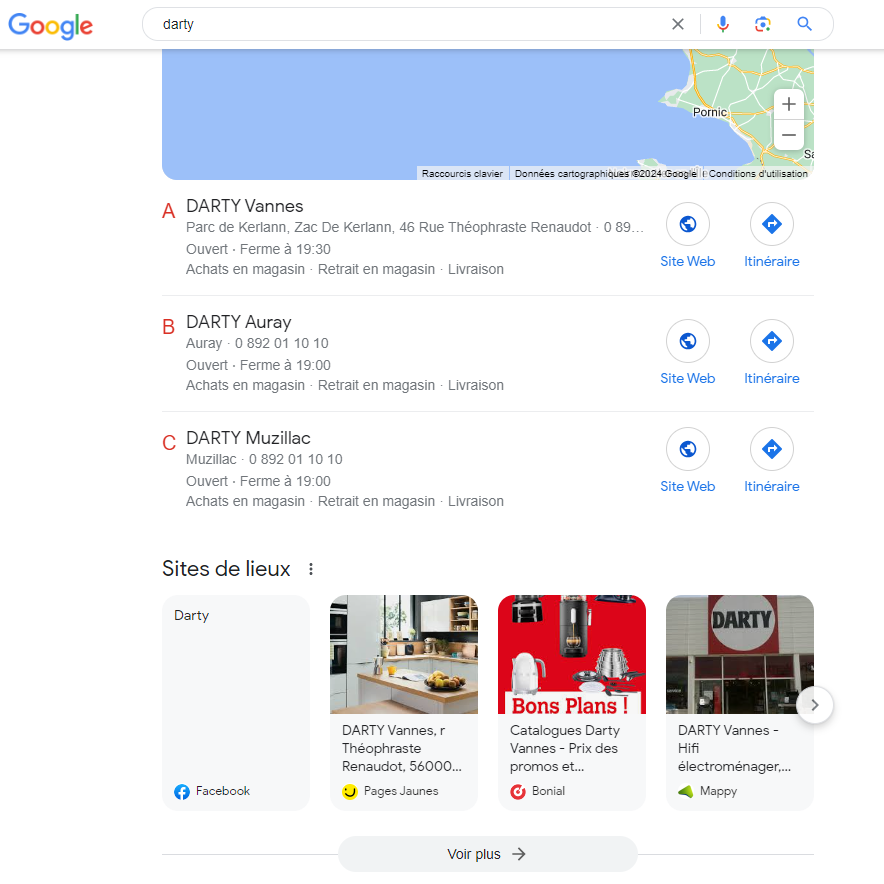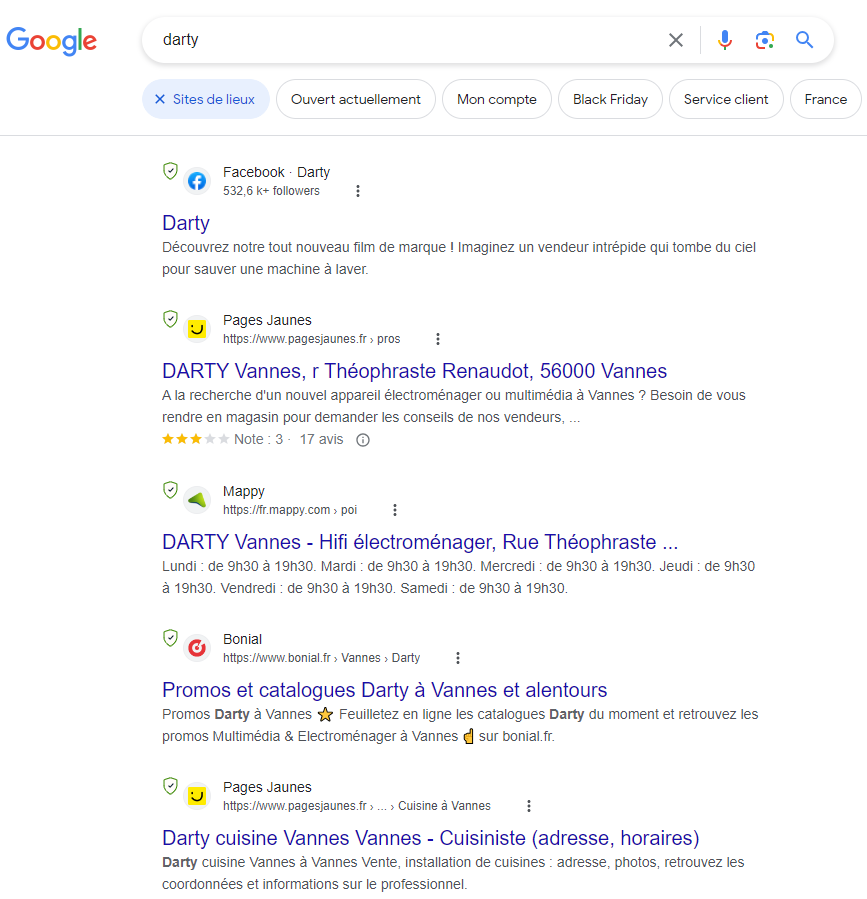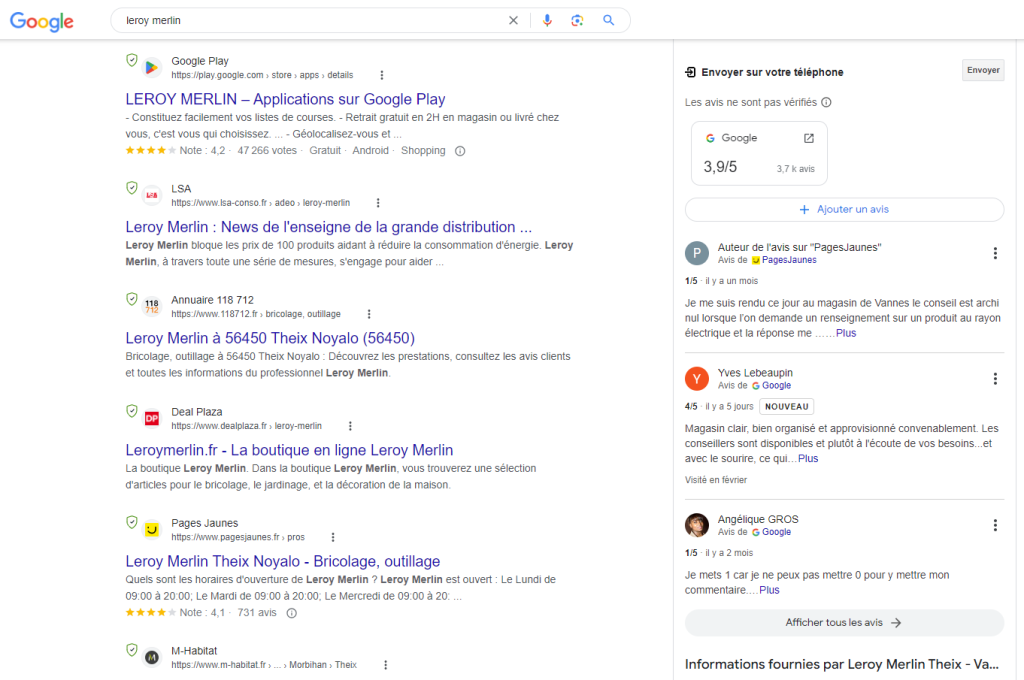In addition to bringing you visibility and generating revenue on the Internet, a website can also help you attract customers to your physical points of sale. This is known as local referencing or "web-to-store".

The roll-out of the latest section of the Digital Marketing Act (DMA), which comes into force on March 7, 2024, will force Google to diversify its results to offer other, external services. With this regulation, the European Union wishes to prohibit Google from favoring its own services in search results.
It's therefore essential to get up to speed quickly, to adapt to the evolution of results pages, and not be content with just having a Google business listing.
A few statistics to help you understand the importance of local SEO:
- Local SEO generates 300% more visits to a site than social networks
- After conducting a local search on the Internet, 72% of consumers visit a store located less than 8 km from their location.
- 46% of Google searches are exclusively for local businesses
- 88% of Internet users trust online reviews as much as recommendations from friends and family
- 78% of local mobile searches lead to a purchase
In this article, we present a series of local SEO actions and strategies that will enable you to take full advantage of the web to increase your in-store traffic.
1. Have a store locator on your website
A store locator is a page on your site dedicated to a physical point of sale, presenting its address, opening hours and telephone number. It provides all the information web users need to contact or visit the store, and can include other complementary elements such as an interactive map, photos, services offered in the store, and SEO-optimized text content featuring local keywords.
A well-designed store locator offers a seamless user experience, reinforcing credibility and trust in the company. It increases the likelihood that visitors will go to the store after visiting your site.
2. Create local pages and write local content
To position your site on local queries, it's a good idea to create pages targeting the keyword linked to your products or service, associated with geographical markers such as the town, department or region. Unique content that responds to the search intent of web users in your catchment area is a real opportunity to position yourself on local queries, boosting your visibility.
3. Set up structured data
Adding structured data to your website enables search engines to better understand the content of your pages and present enriched results to users. To achieve this, be sure to implement structured data tags that describe your establishments: address, telephone number, opening hours, prices or even customer reviews.
4. Be listed in local directories
Listing your establishments on relevant local directories, and maintaining consistency in the NAPs (name, address, phone number) on each directory, is important to reinforce the credibility of your establishment in the eyes of search engines. In addition, directories increase your visibility in the results by maximizing the possible mentions of your company when web users perform a search.

5. Optimize your social networking profiles
Make sure you optimize your social networking profiles by filling in store contact details and interacting regularly with your local audience to encourage in-store visits. This local content will benefit from the virality of social networks and contribute to the online activity of your company and its physical outlets.
6. Obtain customer reviews from a variety of sources

Customer reviews have an impact on a company's online reputation. Encourage your satisfied customers to leave reviews on various review sites and social networking platforms, to boost your company's credibility and attract more customers to your stores. As you may have already noticed, with the implementation of the DMA, Google now displays reviews from a variety of sources, including TrustPilot, TrustedShops, Avis Veriés and Facebook, in its store listing.
7. Optimize your Google and Bing listings
Google business listings and Bing Places for Business are effective tools for local SEO. During a search, a block of several listings can be proposed in the results, known as the "Local pack". With the implementation of the last part of the DMA, Google business listings could lose visibility.
To maximize the display of your business listing, it's a good idea to create complete and as accurate listings as possible for each of your establishments. Optimize them with quality images, opening hours and up-to-date information. Regularly updated and complete information is an excellent way for visitors to get in touch with you.
Also add your products or services and complete descriptions, indicate your catchment area and remember to publish posts frequently: all these signals will be taken into account by the search engines and increase your chances of being displayed in the SERP.w
8. Display geolocated paid ads
Location-based advertising campaigns on platforms such as Google Ads help you to effectively target potential customers located in your catchment area. By using geotargeted keywords and adjusting your targeting parameters according to a certain location, you can maximize the visibility of your products or services to drive traffic to your physical stores.
Here's an overview of a few levers to work on to improve your local SEO. Taking the time to implement web-to-store strategies is essential today to strengthen your online presence in an increasingly competitive digital environment. If your local visibility on the web is an issue for you, our webmarketing experts are at your disposal to define, prioritize and implement local SEO actions tailored to your business: let's discuss your needs today!
